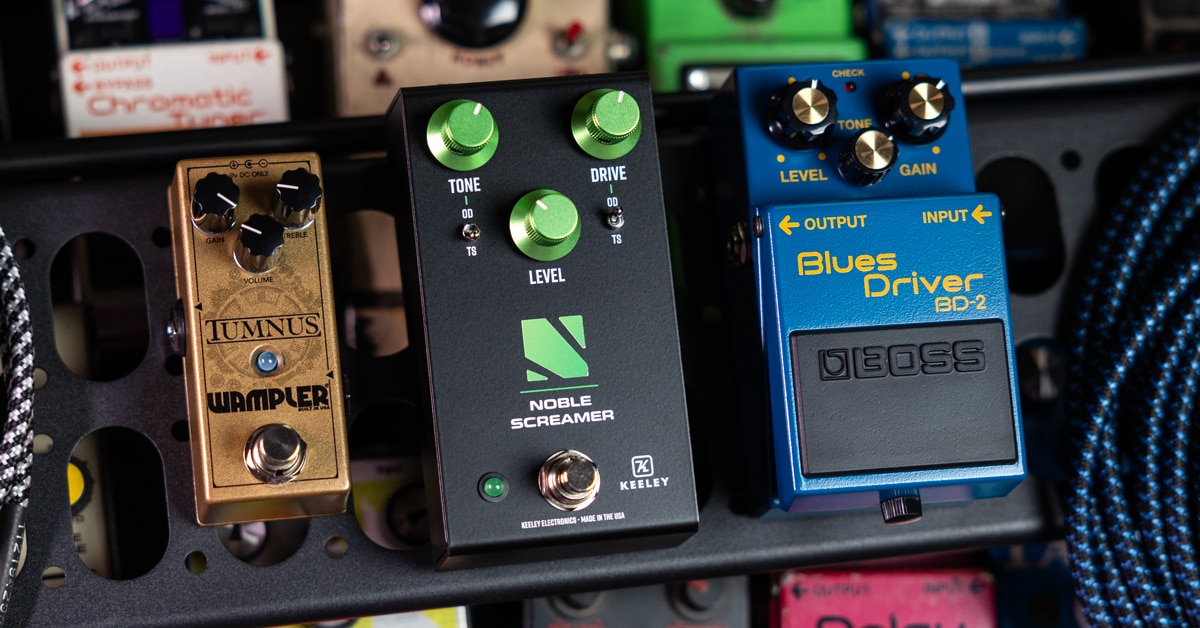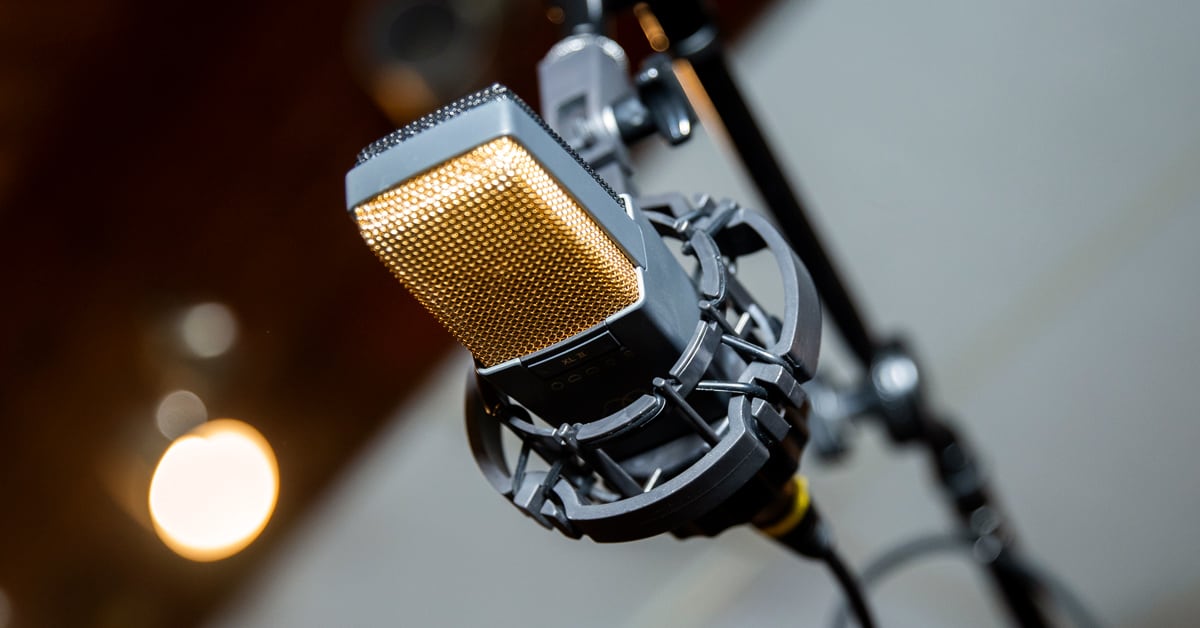In this article, we’re going to build on the previous two in the series, How Dynamic Microphones Work and How Ribbon Microphones Work, and take a look at how condenser mics work. Condenser mics, like the Shure SM81, AKG C414 and Neumann U87, have been mainstays in most recording studios since practical, modern designs first appeared. Since then, condensers have evolved to a family of mics that can serve almost any purpose, and tend to be a large percentage of any serious audio or sound engineer’s toolkit.
Before we dive in, a little bit of review of a few basic principles we covered in the previous articles is probably in order. If you’ve been reading these articles close together, you can probably skip over the next couple of paragraphs. But, if it’s been a while since you’ve looked at the first two, it’s probably worth hanging with us here. There will not be a test afterward, we promise.
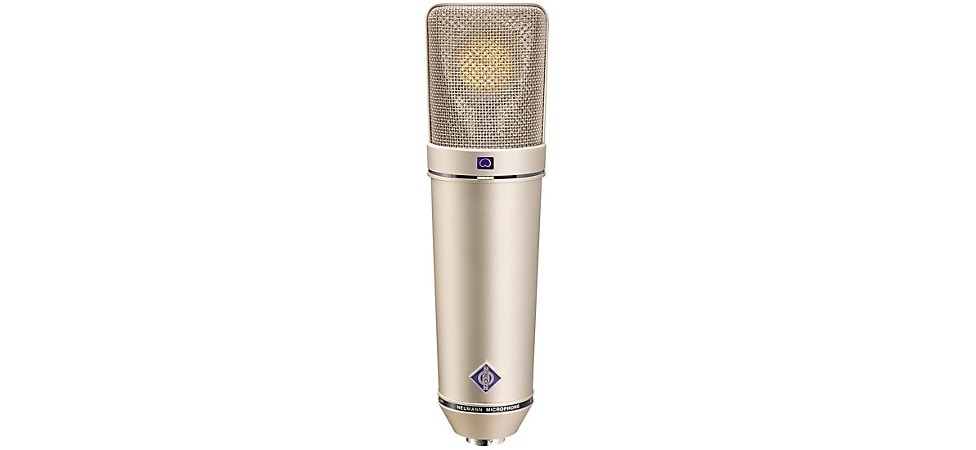
Pictured: Neumann U 87 Ai Large Diaphragm Condenser Microphone
A microphone is an example of what’s known as a transducer. All that means is that it takes one form of energy—in the case of microphones, that’s the energy contained in sound waves—and converts (or translates) it to another form—electrical energy. Another example of a transducer would be an electric guitar pickup that converts the vibrations of a steel string directly into electrical energy through motion within the magnetic field of the pickup’s pole pieces, without the need for sound waves. [Note: In space, they may not hear you scream, but they can hear you shred.]
We’ve been looking at two basic types of microphones—pressure mics and pressure-differential mics. A pressure mic works on the basis of the mic’s diaphragm (think of it as the mic’s eardrum—a vibrating membrane that converts the mechanical energy of sound to electrical energy that can be amplified or recorded) having only one side facing the outside world. The back of the diaphragm faces a pressure chamber that is equalized to the ambient atmospheric pressure, but doesn’t have a passage for sound. Because all of the sound energy hits the front side of the diaphragm, no matter where it comes from, a pressure mic has an inherently omnidirectional polar pattern.

Pictured: Shure SM81 Cardioid Condenser Microphone
The pressure-differential mic has both sides of the diaphragm open to the air, so that sound energy can hit both sides, giving it a bi-directional or figure-of-eight polar pattern. Because positive pressure on one side of the diaphragm means negative pressure on the other side, the two lobes of a bi-directional pickup are always 180° out of phase with each other. This also means that any sound that hits the diaphragm equally on both sides is almost completely cancelled out. As a side note, the two polar patterns we’ve mentioned are the two “natural” polar patterns. All other polar patterns are derived by either combining the two patterns in various ways or by mechanical means, such as baffles and barriers within the microphone’s capsule. That’s enough review for now. Let’s get back to how a condenser mic works.
So why is it called a “condenser” mic in the first place? It’s simply that the electronic component we here in the U.S.A. call a capacitor, used to be called a condenser (and still is in the UK, much like the whole “valve/tube” thing), and the phenomenon of capacitance is at the heart of how these mics work. Many engineers have started to refer to these mics as “capacitor mics” instead, but the OG “condenser” term is far more familiar and more widely used.
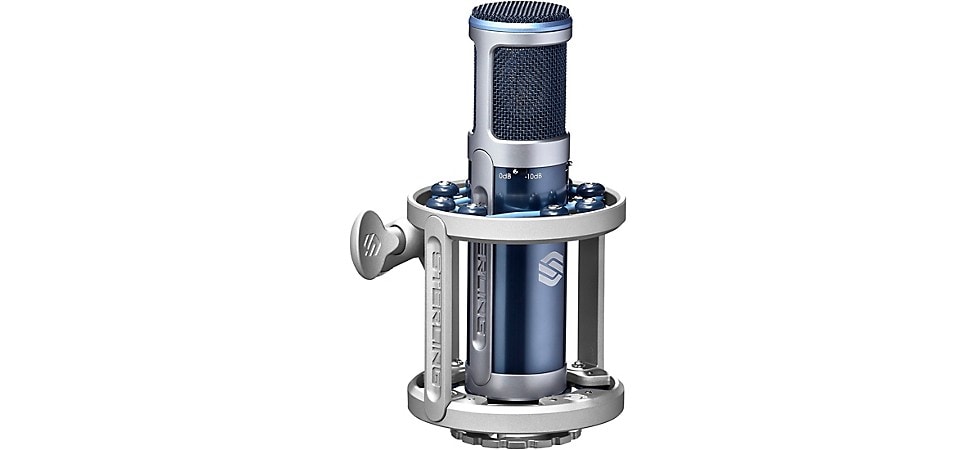
Pictured: Sterling Audio ST159 Multi-Pattern Condenser Microphone
Where the previous mics we’ve discussed, dynamics and ribbons, both use internal permanent magnets as part of their design, the condenser mic ditches the magnet and instead uses a capacitor (specifically, an “air capacitor”) to convert the sound energy into electrical energy. How does it do that? An air capacitor is formed by having two conductive plates separated by a non-conductive “dielectric,” which in this case is the air. The two plates are connected to the negative and positive connections of a power supply and, when power is on and the capacitor is fully charged, there is a stable voltage stored in the capacitor that matches the voltage of the power supply.
In the case of a condenser mic, the back plate of the capsule is fixed and the diaphragm side is a very thin, very light—frequently Mylar with an exceptionally thin layer of a conductive material like gold—membrane that is under tension on the other side of the air gap. It’s that thinness and lightness that makes for the exceptional frequency response and sensitivity of condenser mics. The less mass the diaphragm has, the easier it is to move. When sound waves hit the diaphragm, the vibrations of that membrane cause a change in the capacitance of the system, which creates a change in the voltage stored in the capacitor, and that voltage change mirrors the peaks and troughs (compressions and rarefactions) of the sound waves. This gives us the electrical signal that ends up being recorded or amplified, and turned back into sound waves by the amp/speaker combination on the playback end of the signal chain.
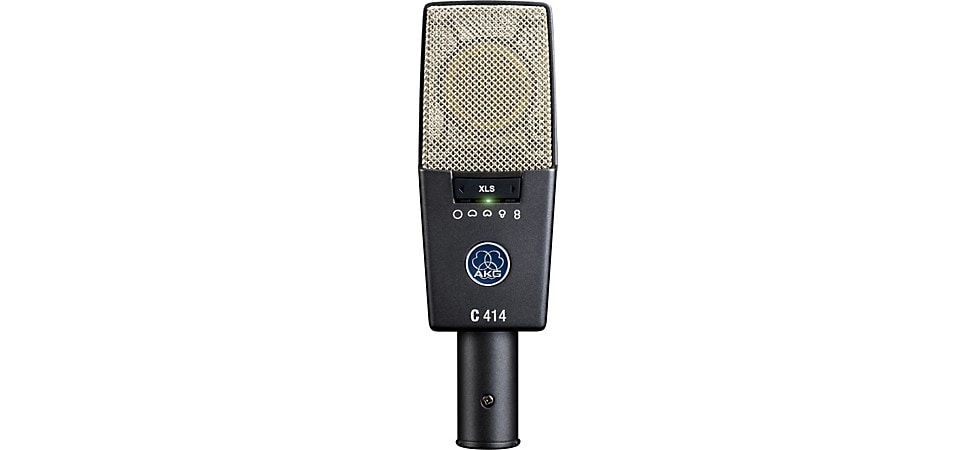
Pictured: AKG C414 XLS Reference Multi-Pattern Condenser Microphone
You’ll notice that we mentioned a power supply above. Condenser mics need a constant source of voltage to keep the plates of the capacitor that forms the microphone charged. This is because the output of the mic works on the basis of the difference between a capacitor that’s fully charged in its rest state and the increases and decreases in voltage caused by the increase and decrease in capacitance as the diaphragm vibrates. This is why there are phantom power supplies on mixing boards and, in the case of most tube-based condenser mics, separate standalone power supplies—they supply the voltage that keeps bringing the capacitor back to its rest charge state.
A quick word about condenser mics and polar patterns. If you followed the description of what a pressure mic is, you’ll notice that the basic condenser mic is a form of pressure mic and thus, omnidirectional by nature. This may lead you to ask about multi-pattern condenser mics that can switch from omni to cardioid to figure-of-eight polar patterns. A basic condenser capsule is a pure pressure mic, but it’s possible to engineer the backplate in such a way that the condenser’s diaphragm can respond to sound energy from both the front and rear. That is a fairly complex engineering task that makes for a more expensive build process, though, so you’ll find that a fair number of multi-pattern condenser mics use a pair of matched capsules back to back to achieve those multiple patterns. In the end, what’s important is the combination of how the mic sounds and how creatively you can use it.








